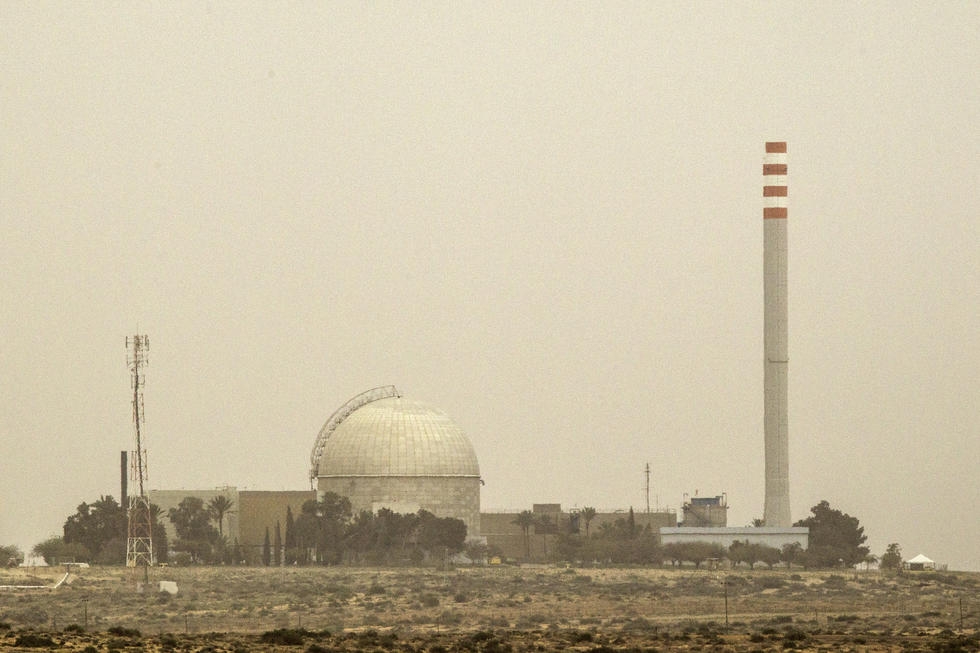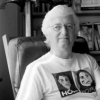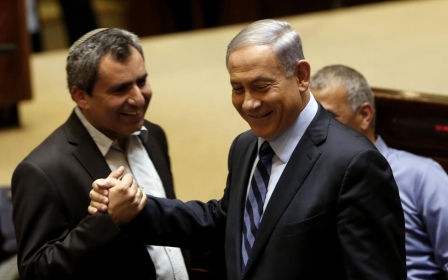Dimona: Israel’s ‘Little Hiroshima’

In the early 1950s, after Israel had fought a desperate war of independence in which thousands of Israelis died to ensure the founding of the state, David Ben Gurion, its first prime minister, decided the nation required an existential trump card to guarantee its survival. In 1955, he tasked his chief aide, Shimon Peres, with creating a nuclear programme that would lead to building a nuclear weapon.
The most critical part of this project was creating a nuclear reactor that would manufacture the fuel to make these weapons. In 1959, Israel began construction on its reactor in Dimona. Eventually, there were thousands of workers both building the plant and, once it was constructed, working within it to build the arsenal of 200 nuclear weapons Israel is reputed to possess. An excellent short overall history of the project can be found online.
In the early stages of research, before Dimona existed, there were accidents that exposed scientists to lethal levels of radiation. Some of them died and their names are known (though not well). Less known is that Dimona had a series of accidents - the most serious in 1966 - that exposed hundreds of its workers to similarly lethal doses.
Avner Cohen, the world’s leading scholar of the Israeli nuclear programme, told me that in the first 20-25 years the processes used to protect workers were primitive and sloppy. Mistakes were common, often not intentionally, but because relatively little was known about the proper handling of radioactive materials. In some cases, documentation was fabricated.
This is the subject of Orna Ben Dor’s riveting two-part documentary, The Dark Secret of the Dimona Reactor (Part 1 and Part 2, both in Hebrew), produced for Israeli TV. Workers there call the nuclear plant “Little Hiroshima,” alluding not only to the destructive power of what’s produced there, but the tragic impact that the reactor has on those who work within it.
The documentary, while it exposes many secrets and crimes of the state against its workers, is also unintentionally maddening because it deals with a subject that the nation deems justifiably opaque. For that reason, no one in the Israeli Atomic Energy Commission, which runs Dimona, will speak on the record to the cameras. No journalist is allowed within the facility. Few if any records are made public regarding the functioning of the reactor.
According to Ben Dor, the medical oversight of workers was a sham. They were given tests that were never processed and told they had a clean bill of health, only to find out months or years later they were dying of cancer. The few records that are accessible happen only because of lawsuits that pry them loose from the fingers of the state.
The real story of the film is the extraordinary lengths to which the state will go to shield itself and its nuclear project from public awareness. Following on from this is the nation’s willingness to treat those scientists, engineers and researchers who devoted their lives to this sacred project as refuse to be discarded once they get sick and die, no longer providing any useful service. There is a schizophrenic nature both to the documentary and the victims portrayed. On the one hand, they are patriots who understand the danger posed and accept it for the sake of protecting the state from its enemies. But on the other, they are human beings who demand that the country treat those who paid the ultimate sacrifice with dignity.
Treated as garbage
The “lowest of the low” (on the hierarchical totem-pole) were the nuclear technicians, the clean-up workers sent in to mop up after equipment malfunctions. Often, they were “children” of the reactor: raised in the town, attending the technical high school at the plant that taught them how to maintain it and its equipment. They faced the most danger. Yet no one warned them. They did their jobs anonymously. But when they got sick, the state tossed them overboard. One worker who was Mizrahi Jew was told that his cancer wasn’t the result of his work at Dimona, but rather his Moroccan origin. His Sephardi genes somehow caused his illness. If it was only the racism of this claim that was involved it would be bad enough. But to use racism to cover up state crimes against its citizens is unforgivable.
The tragedy is that the victims themselves, through their own innate sense of patriotism, refuse to understand the contradiction inherent in what they demand of the state. Israel itself is a kingdom of secrets. Dimona is a secret within a secret; the holy of holies of Israel’s nuclear religion. You cannot unravel the mysteries and expose the lies and crimes unless you tear the veil away. To do this, you must force Israel to end the opacity, end the secrecy. But no one in a position of power is willing to do this.
These are human beings feeling their way in a darkened hallway toward the light. They can’t see what’s around them, but can only touch the walls and try to make out where they are and what’s around them. They are frightened. No one helps them understand where they are. They must make this journey alone.
In the second film, Ben Dor and two local residents visit a remote electrical station that supplies power to the plant. They note a stream flowing nearby that appears discoloured and polluted. Any journalist researching such a subject knows she must test the water to determine their level of purity. But Ben Dor tells us she can’t. Anyone who brings a geiger counter to any Dimona facility or who tests the air, water or soil around it is committing a crime punishable by up to 15 years in prison.
Because the government forecloses access to sources, Ben Dor must allow the victims of Dimona to tell their story. They do so powerfully and tragically. Widows and orphaned children speak of their loved ones taken from them too early by a state that behaved cruelly and heartlessly. Courageous lawyers describe their years-long devotion to the search for justice. Medical doctors and researchers help sort through the miasma of lies and half-truths offered by the state, some at great risk to their careers by a vengeful IAEC.
The biggest problem with the film is the one that the nation itself faces. All the ills it portrays emanate from one powerful, poisonous fact: the nuclear project itself. In other words, when you decide to manufacture a nuclear bomb, you accept a cascade of choices that accompany that one fundamental decision. In legal terms, Israel’s weapons of mass destruction (WMDs) are the poisoned tree and all the deaths, radiation poisoning and environmental damage are the fruit of this poisoned tree.
The documentary doesn’t delve into deeper questions. It remains on the surface, dealing with important issues like environmental safety and worker mortality. These are the human-interest parts of the story, the ones an audience can immediately grasp, without having to ponder the more abstract and complicated issues.
Israel's 'KGB state'
Avner Cohen also faults the documentary producer for not confronting Israeli nuclear bureaucrats more aggressively and demanding that they reply to the accusations. He argues in the review he wrote for Haaretz’s Hebrew edition that Israel must force those who devise Israel’s nuclear policy to confront uncomfortable questions. Only in this way can change happen.
The secrecy of the nuclear programme, one interviewee calls it a “KGB state,” goes hand in hand with the Israel’s overall opacity around all manner of security issues. It’s not surprising that Israel has put its fate in the hands of a few nuclear bureaucrats like those who run Dimona, because it runs its overall military apparatus in the same way. No civilian oversight to speak of. The generals get what they want. All in the name of protecting the state. It’s a devil’s bargain.
Ben Gurion could have chosen a different path. He could’ve followed the path Shimon Peres advocated to deter the 1973 war: he urged a public nuclear test to warn the Arab states what they confronted if they attacked. In the longer term, such transparency might’ve gone a long way to ameliorate some of the worst offenses of the nuclear security state. But Ben Gurion believed the quieter Israel was about it, the less opposition he might face from the world, especially the US.
He made a choice to create a nuclear arsenal in order to offer the state a mechanism to guarantee survival in the face of imminent defeat. But now Israel has ensured its existence. There is no existential threat (no matter what Bibi says regarding Iran). Nuclear weapons don’t guarantee security. In fact, many serious analysts argue just the opposite.
Israel may eventually realise nuclear weapons are an albatross around its neck. They were never needed in the course of all Israel’s previous wars and likely will never be needed (especially if it would agree to a regional nuclear-free zone - a prospect that is an anathema to it, so far). Yet despite the utter lack of utility of Israel’s WMDs, its nuclear personnel have paid a huge and terrible price. It is shameful that the state that asked them to make the ultimate sacrifice defiles their memories with lies and stonewalling. It prefers this to paying them the few millions it would take to do justice to their pain and suffering.
- Richard Silverstein writes the Tikun Olam blog, devoted to exposing the excesses of the Israeli national security state. His work has appeared in Haaretz, the Forward, the Seattle Times and the Los Angeles Times. He contributed to the essay collection devoted to the 2006 Lebanon war, A Time to Speak Out (Verso) and has another essay in the upcoming collection, Israel and Palestine: Alternate Perspectives on Statehood (Rowman & Littlefield).
The views expressed in this article belong to the author and do not necessarily reflect the editorial policy of Middle East Eye.
Photo: A picture taken on 8 March 2014 shows a partial view of the Dimona nuclear power plant in the southern Israeli Negev desert (AFP)
New MEE newsletter: Jerusalem Dispatch
Sign up to get the latest insights and analysis on Israel-Palestine, alongside Turkey Unpacked and other MEE newsletters
Middle East Eye delivers independent and unrivalled coverage and analysis of the Middle East, North Africa and beyond. To learn more about republishing this content and the associated fees, please fill out this form. More about MEE can be found here.





